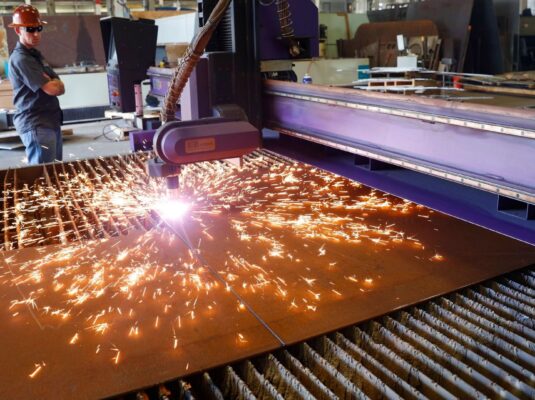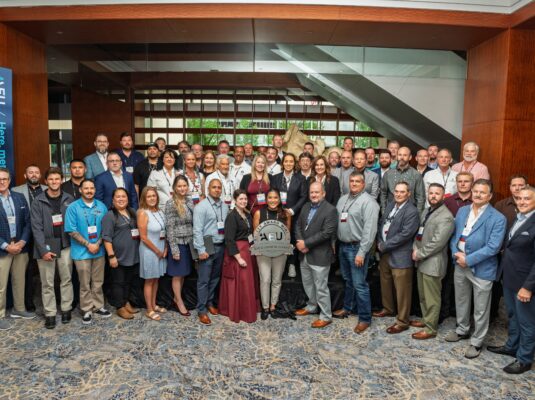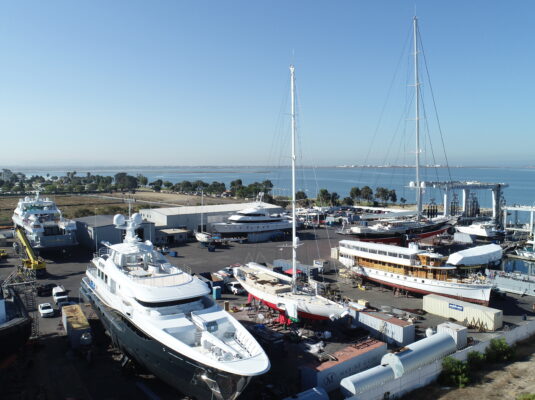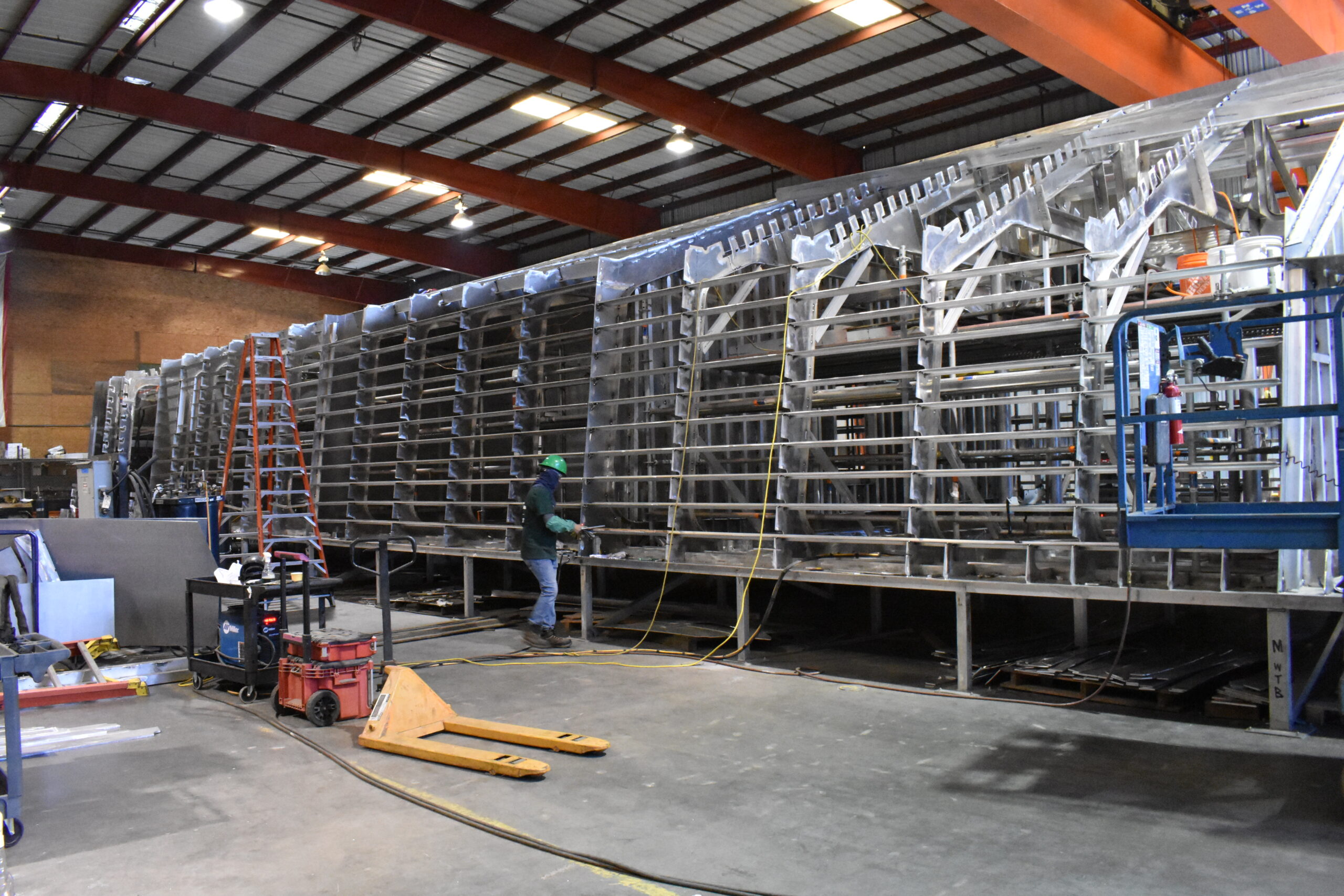
August 14, 2025
UncategorizedBehind the Scenes- The Strength Below the Surface: The Role of Welding in a Shipyard
The Foundation
In the world of shipbuilding and repair, welding is more than just a trade — it’s an art. The work of welders creates the dependable foundation that gives vessels the safety and stability to reach their destinations, wherever they may be headed, day in and day out. From ship repairs to constructing a vessel from the ground up, welders make sure each vessel is structurally sound.
“It cannot be overstated how important welding is to the build process,” said MGBW’s New Construction Program Manager Andrew Nottberg. “The welder’s skill and craftsmanship directly affect the integrity of the vessel’s structure, which is crucial when building a boat that is expected to go to sea with a crew onboard.”
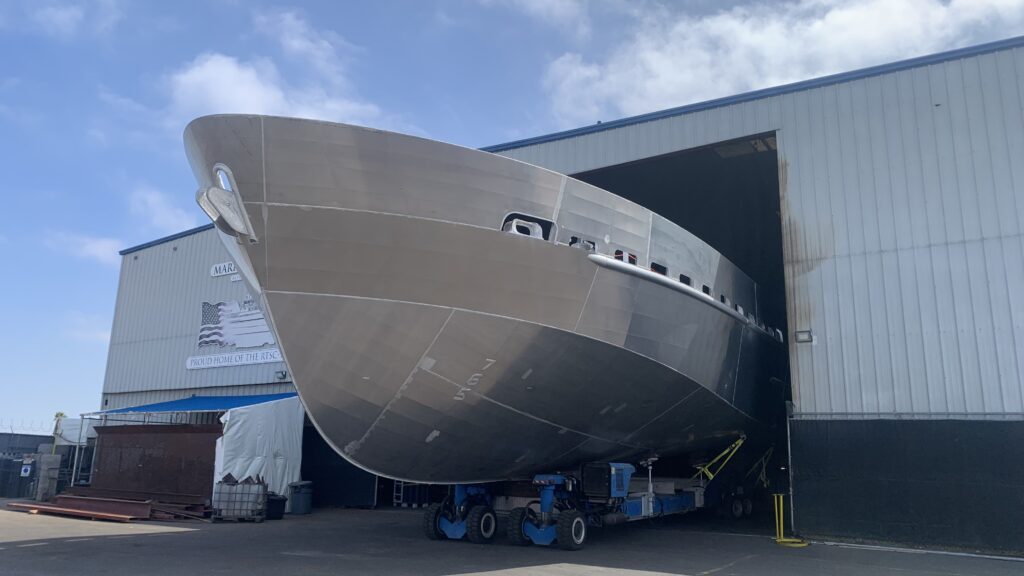
So, what is a weld? It’s the result of melting two or more pieces of metal and allowing them to cool and fuse together. When done correctly, this process creates a durable joint capable of withstanding heavy stress and pressure. This is why skilled welding is a cornerstone of shipbuilding, directly impacting the quality and reliability of every project.
Welding with Purpose

This is Miguel, a certified welder who has been with MGBW for about nine years. He began his career in 2016 as a fitter, preparing materials for welding and supporting the team through precision prep work. Over time, Miguel’s desire to learn and improve led him to train and become a certified welder. He now has over five years of welding experience and serves as a Leadman in the New Construction department at MGBW.
Miguel believes the key to success in his trade comes down to passion and commitment. He said, “You need to love what you do and always be striving to do better to fuel that spark or you will burnout.” This advice illustrates the challenges and complexities of the work and how it takes a special type of person with focus, patience, and passion for the craft to be in this position.
“Every welder that shows up daily with a good attitude and determined to do the best job makes a huge difference in the project’s success,” said Nottberg. “A single welder can set the standard for the whole team, helping to drive quality and efficiency throughout the project. In the same breath, a single welder can also cause the whole team to fail by causing delays, rework and additional costs.”
Sparks & Precision
Welding is a technical skill that requires focus and a deep understanding of metals such as steel, aluminum, copper, etc.
Welders use many different methods depending on the job, but the most common methods include:
- MIG (Metal Inert Gas) Welding: Fast and efficient. It’s often used for large structural parts where speed matters.
- TIG (Tungsten Inert Gas) Welding: Slower but more precise. It’s ideal for thin metals or welds that need to be extra clean and smooth.

Just as important as the welding method, welders use various motions when applying a weld such as:
- Stringer: A straight, steady motion where the welder moves the torch in a straight line. This creates a narrow, clean weld and is often used for thin materials or simple joints.
- Weaving: A side-to-side motion that covers a wider area to fill larger gaps or create wider weld beads for stronger joints.
- Whipping: A quick, forward-and-back motion where the welder “whips” the torch along the joint. This technique helps control heat and prevents burn-through on thin metals.

The specific motion that is needed for the job is dependent on the type of material, thickness, and position of the weld.
Once the weld is finished, it must be inspected before it’s approved. In shipbuilding, welds need to meet strict standards to make sure they’re strong, safe, and built to last. Third party inspectors carefully check each weld for problems such as cracks, holes, weak spots, or areas where the metal didn’t fully bond together. Some of these issues are easy to see, but others can be hidden inside the metal and can be tested using x-ray or conducting a liquid penetrant test.
Built to Last
From the first spark to the final inspection, welders play a critical role in getting ships built and ready for the water. Their work impacts not only the vessel’s strength but also its safety and longevity.
Nottberg had compared the welding process to baking a cake, “In order to control the ingredients, we buy approved materials and fillers that meet required standards. To control the recipe, we create procedures that outline how it all goes together. The last piece is the baker (welder), who needs to be tested and qualified on that recipe to ensure they can reliably bake a delicious cake.”
This analogy captures the precision, skill, and consistency required in welding. The right materials, procedures, and expertise must come together seamlessly to deliver vessels that are built to last and can withstand even the toughest conditions at sea. At MGBW, this process is supported by a strong focus on quality, safety, and innovation. While much of a welder’s work remains unseen below the surface, it plays a critical role in upholding the standards that define each project’s success.
-Written by Shane Mullan

